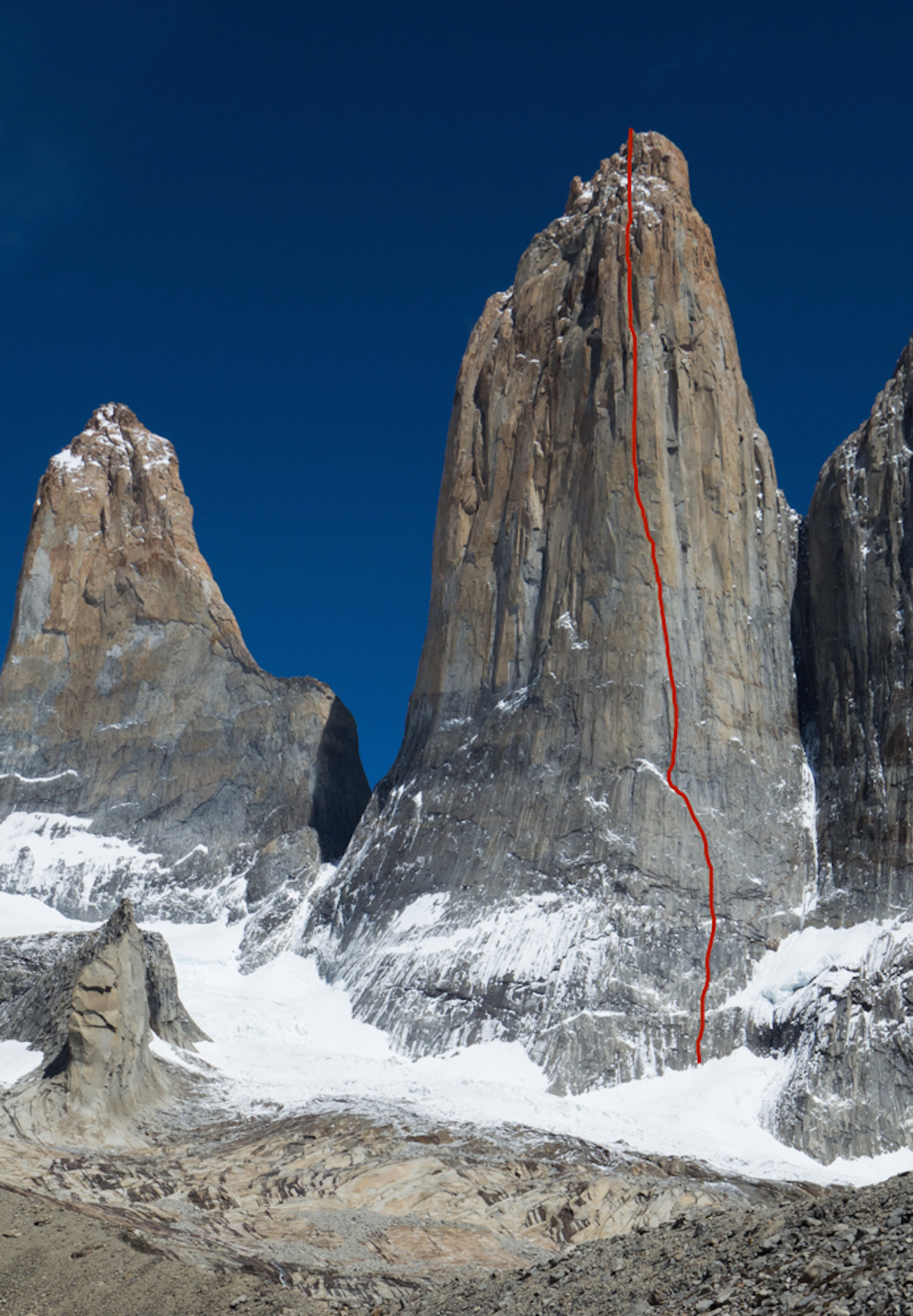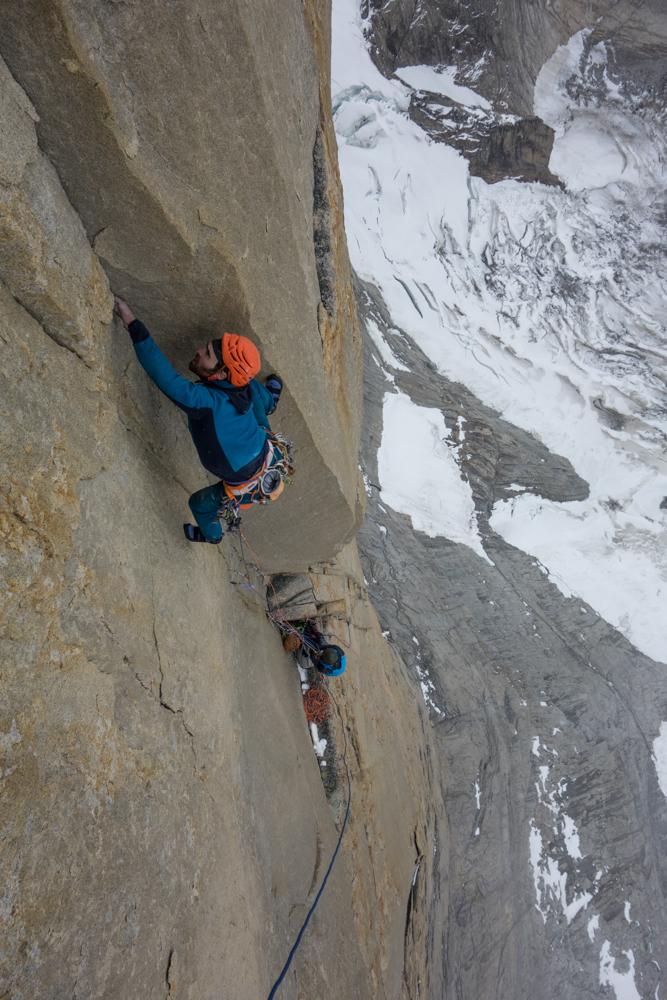Dreaming with Discipline - 2 of 7 - Chart Your Course
/by ERIK ORTON
This is week 2 of 7 in a series counting down to the launch of our new book, Seven at Sea.
Los Torres del Paine
In Patagonia, the southern region of Chile, there’s a mountain range called Torres del Paine. Los Torres del Paine is one of the most beautiful ranges I’ve never seen. I’ve never been there. But I had a picture of it in my locker in high school. I’m working on getting myself and my family down there this winter (summer in the southern hemisphere) because I want to climb the central tower. The whole thing feels remote and challenging. I don’t really know how I’m going to pull it off, which brings us to our topic for this post: Chart Your Course.
Last week Emily wrote about why and how to Choose Your Own Island. When we pick something far fetched like climbing the Torres del Paine; when you choose your own island, something unseen and over the horizon, the next step is figure out how to get there. There’s nothing too tricky or brilliant about that logic, but plenty of us get bogged down at this stage.
Learning and Planning
Charting a course is just as much about learning as it is about planning. I like to give ideas lots of time to simmer. ‘Marinate’ is the word I use. Right now I’m marinating this idea of climbing the Central Tower. Here are some things I’ve learned:
To access Los Torres del Paine, it’s best to fly into Santiago, catch a connecting flight to Punta Arenas, and then take a bus to Torres del Paine.
There are lots of lodges and campsites in the area. I still need to get a handle on prices for what will be the best match for us.
I’ve watched lots of YouTube videos and read lots of articles about climbing in the region.
I recently purchased a movie for $12 of three Belgian climbers, Sean, Nico and Siebe, whom I really respect. They climbed the central tower in 2017. I follow them on Instagram and comment and pepper them with questions. Every now and then they’re kind enough to respond.
I found a blog post about the various routes up the central tower.
I learned the name of route Nico, Sean and Siebe climbed, found this blog post and downloaded their hand drawn topo maps.
Josh, with whom I climbed El Cap early last year, has climbed a lot in Patagonia. I asked him how to prepare for Patagonia climbing, where the weather is predictably atrocious. He said, “Go to Yosemite in winter and climb El Cap during as many storms as you can.” Lovely.
I asked Josh if he’d be willing to climb something with me in Patagonia. He said, “Only if you bring your family.” Emily and the kids are usually more popular than me.
While in Chile, I like the idea of driving around and maybe trying my hand at surfing some of the Pacific coast waves. I’ve looked into buying an RV second hand in Chile. Here’s some guidance on how to do that.
So far this process has cost me some time and a grand total of $12. Learning and planning do not have to be expensive but are extremely valuable.
Their two portaledges hanging midway up the route. Photo courtesy of Nico Favresse, Siebe Vanhee and Sean Villanueva O'Driscoll
The hand drawn route for “El Regalo de Mwono.” Photo courtesy of Nico Favresse, Siebe Vanhee and Sean Villanueva O'Driscoll
Create a Shoebox
I have all these links bookmarked. I’ve saved all these files into folders on my laptop. Eventually I’ll start putting together a budget, build a timeline and start breaking down the lead-up process into small manageable steps that I can work through slowly and deliberately one step at a time.
A lot of people think it’s flashy to “chuck it all and sail off into the sunset” without any forethought. I’m not that guy. I take risks but I move to the edge patiently. I’ll deal with jumping once I get there. We’ll talk about knowing when and how to jump in a later post, but this is about charting a course.
Josh at our belay after completing the Great Roof.
Find Mentors
I’m a big believer in finding great mentors. Last spring I climbed El Capitan with Josh in Yosemite and feel lucky to know such a competent climber and all-around good guy. Some of my mentors are friends I’ve sought out. Some are people I watch from afar like Nico, Sean and Siebe. I learn from all of them. When we were prepping to buy and live on Fezywig, we found mentors all around the world through blogs, online forums and YouTube series. We continue to stay in touch with several of these mentors to this day. For me, the learning and gathering of information is half the fun of the adventure. This is solving the puzzle in my mind. It also becomes the material I use to share the idea with the people I hope will join me. I know I’ll still have to carry it out and live it in person, and that version will undoubtedly be different from the version I plan, but that’s okay. The only way to get to a final draft is to start with a rough draft.
Once you’ve chosen your own island start learning, start gathering information. Make it real by putting a pin in a map, doing some Google searches, create some bookmarks in your browser, organize them into a folder or list, download some pictures, find some blogs, watch some videos, read some books, find out what things cost. Ramble around with the idea. Marinate it. Learn about whatever aspect of your Island strikes your curiosity. Gather it all up and put it in a “shoe box”—whatever form that box may take—and rummage through its contents from time to time. A path will start to appear, a line will become apparent, a timeline will present itself. If you squint your eyes, you’ll be able to see a route that starts where you are and ends on your Island. You won’t see all the steps, but you’ll see how the dots might connect. And then you’ll know you’re getting ready to cast off.
Week 1 – Choose Your Own Island
Let’s Talk
We’ll talk about Casting Off next Saturday. In the meantime, please join us on Tuesday, January 29 at 1pm ET for a FB Live discussion about this post. If you can’t make it at that time, you can watch the recorded discussion on the Fezywig Facebook page.
Also, we’re excited to announce that the ebook/Kindle version of Seven at Sea is now available to order. So for those of you who live on the go or who just hate paper, here’s your big chance, Seven at Sea, the digital book.
Get Digital


































